A big thank you to Emily Caswell for letting me share her post on the Safe Cosmetic Act of 2010! The blog is, of course, written with tongue firmly in cheek but for a serious reason. It is written in response to the broad, overreaching tenants of the proposed HR 5786 which would ‘ban’ ingredients that were proven to be ‘carcinogenic when ingested’ for use in skin care. Most everything is carcinogenic in some way, shape or form when ingested and Emily has a droll interesting way of explaining commonly demonized trace elements that may be lurking in your own fridge. Check out her blog GCDSpa Stuff and website GCDSpa.
The Precautionary Principle: A Cautionary Tale
I’ve been inspired by the actions of WATCH (Women Against Toxic Cosmetics Harm) and the Alliance for a Clean and Healthy Maine, who (with the assistance of the Environmental Working Group and Campaign for Safe Cosmetics) sent away 12 common cosmetics products last spring to be tested for chemicals. Since they’ve already found the hidden toxins in my medicine cabinet, I figured maybe I’d take a look at what was going on in my fridge. I’ve been a vegetarian for more than 25 years and eat a diet based largely on whole, organic foods, so I was sure my food “tests” would come out clean. I was appalled by the results.
Carcinogens
• Formaldehyde
As it turns out, the apples, bananas, beets, broccoli, onions, cabbage, carrots, cucumbers, grapes, green onions, kohlrabi, pears, potatoes, spinach, tomatoes, radishes, and watermelon I have been feeding my family naturally contain 2 to 60 mg per kg of formaldehyde. The dried shiitake mushrooms my husband likes contain a whopping 400 mg/kg! As you may know, formaldehyde is classified by the EPA as a probable human carcinogen, and is known to cause cancer in rats.
• N-nitrosopiperadine
Before I learned of its formaldehyde content, I enjoyed my baked potato, and added a generous dash of black pepper. Now I’ve learned that black pepper, too, causes cancer in mice. It contains substances that break down into N-nitrosopiperadine, which is carcinogenic.
• Safrole
With pepper out of the picture, I figured I’d turn to other herbs and spices to make my poison-laced meals more appetizing. But cinnamon and nutmeg are among many that contain safrole, which causes liver cancer in rats. Rats.
• Tannins
Who knew that my morning beverage was killing me from the inside out? Guess it doesn’t matter whether I choose coffee or tea, or head straight for the cocoa, because with all three I’ll be getting tannins, substances which cause tumors in experimental animals. (What a relief that people don’t consume coffee, tea, or cocoa in large quantities!)
Endocrine disruptors
I thought that by eliminating the parabens from my beauty products I’d be “safe” from endocrine disruption, but I was so misled. Lots of plants apparently have naturally-occurring hormone-like activity, in the form of phytoestrogens. There are high levels of these phytoestrogens in my carrots, legumes, broccoli, potatoes, cauliflower, soybeans, oats, rice, onions, apples, and coffee. Thank goodness I don’t drink beer, because they’re in that, too. Sure, these phytoestrogens are considered beneficial by some, but I also read that when sheep consume these natural hormones it can lead to decreased fertility. Their consumption also disrupts the normal cycles of female rats. And if things are bad for rats (particularly when consumed in grotesque amounts), they must be bad for us (even if eaten in moderation). Right?
Goitrogens, enzyme inhibitors, mutagens, antivitamins
The list goes on and on. It’s a horror show. All of my favorite foods have ingredients that, if not downright toxic, are capable of inhibiting enzyme action, vitamin absorption, and thyroid function as well as causing cellular mutations. Potatoes, tomatoes, eggplant, mung beans, Brussels sprouts, broccoli, parsnips, celery, and wheat are only a few. I’m a walking time bomb, eating my way to the next organ failure.
Now that I understand the dangers, I can’t believe that the government has been advising us to eat fresh fruits and vegetables every single day! Even The Harvard School of Public Health says, “Most people should aim for at least nine servings (at least 4½ cups) of vegetables and fruits a day.” They recommend, “Go for a variety of kinds and colors of produce, to give your body the mix of nutrients it needs.” What are they trying to do, KILL us??
I, for one, will not be brainwashed. You can tell me that these foods are “safe” and even “beneficial,” but I’ve done my research. I know the truth. I’m taking my cue from the Environmental Working Group and their Campaign for Safe Cosmetics, and adopting the precautionary principle with regard to my fridge. Anything that’s been linked to cancer in animals, or has estrogenic or toxic effects, will be banned from my diet. Until further notice, then, I won’t be eating apples. Or bananas, beets, onions, cabbage, carrots, cucumbers, grapes, green onions, kohlrabi, pears, potatoes, spinach, tomatoes, radishes, or watermelon.
Oh, and coffee, tea, cocoa, eggplant, mung beans, brussels sprouts, parsnips, celery, broccoli, cauliflower, beans, lentils, peas, peanuts, soybeans, oats, rice, onions, cinnamon, nutmeg, and pepper. Did I forget anything?
But I’m not going to stop there. These foods are in every supermarket, and as The Story of Cosmetics suggests, we need to make sure that for items in our stores, the “choice to be safe and healthy has already been made.” Surely this must apply to our food, too? Take a look at your broccoli label. Where is formaldehyde listed on that package? Where are the goitrogens? The laws governing these labels are a travesty! I will not rest until my Evian label includes not just “water,” but also arsenic, fluoride, chlorine, barium, mercury, atrazine, copper, chromium, and any other measurable contaminants.
The Safe Cosmetics Act of 2010 is nice and all, but The Safe Foods Act of 2010 is a piece of legislation I could really sink my teeth into. Who’s with me?

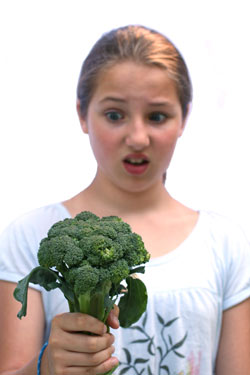
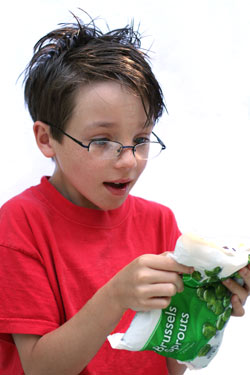
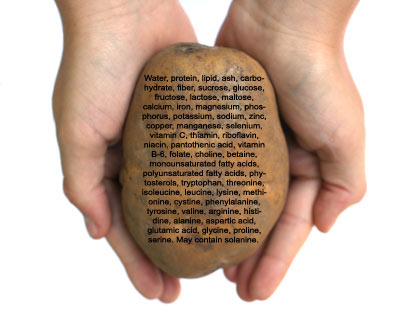



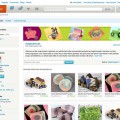
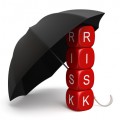
I agree with others, this wasn’t meant to insult your intelligence. It was meant to insult the way the legislation is written. Mainly because there are not many (if any) natural substances that do not contain some trace amounts of a toxic substance, but we know that dose is more important than presence. We also know that the body does not absorb ingredients used topically as efficiently as it does ingredients that are ingested. So to assume that topically applied “toxins” will automatically cause cancer is just silly because most substances have to enter the body a certain way to have any effect.
Also, if you are interested, there really isn’t a significant amount of formaldehyde released from a bottle of nail polish. It goes back to many people misunderstanding the basic concepts of chemistry and not understanding that when two substances are chemically reacted, you get something new with new properties. Think sodium and chlorine (both poisonous) vs sodium chloride. So, you don’t have to worry about developing nasal cancer when you paint your nails.
Since the Safe cosmetics bill proposes to prohibit all detectable levels of carcinogens, it is irrelevant how much is in the broccoli v the nail polish; both are treated equally. That is just one of the ridiculous aspects of this bill! The irony at least puts it in an entertaining perspective! I think its a great post. Thank Emily for writing it, thanks AM for reposting it.
I give this post ***** 5 stars!!! I think her use of sarcasm is witty and right on target. Thanks for doing the research I was actually wondering what little evils were lurking in my broccoli. I guess we will just have to live off of soda-pop, hotdogs & rainbow sherbet. I didn’t see those on the list, so they couldn’t possibly carry any ingredients that would be harmful to us. Wink, Wink. 😉
Laugh a little it’s good medicine (and probably the only thing we will have left to put in our lip balms!)
I think this is a great, humorous article on a serious topic… and I think it was something we need now to break up the slow dread we’re all feeling.
The point of this article is, to me, loud and clear. Sure, I would love to see a comparison of the formaldehyde levels in food to those of nail polish, except that I can’t FIND that information anywhere online. Even the report linked in the first paragraph of the article didn’t give amounts.
I’ve been trying to find case studies and other actual facts on people who have been seriously harmed by cosmetics & toiletries, and I haven’t seen anything. I was hoping to at least find stories about workers in the beauty industry, and I haven’t found any, except for vague mentions by the “scare tactic” sites. Perhaps someone can point me in the right direction?
In contrast, I can easily find statistics on deaths from tainted food, cancer warnings on foods that people eat regularly (Sweet N Low, anyone?) and obesity rates from eating too much food. That’s not to mention all the health issues people have from smoking or drinking alcohol to excess. These all seem much bigger problems, to me, than over-regulating an already-safe product.
Lastly, I’d like to thank Emily & Anne-Marie for their work to oppose the SCA in its current form. While I’d like to think its intention is good, in reality, it seems unnecessary and redundant.
Soap Queen, is there any way you could give me permission to reprint this or do I have to contact Emily Caswell? Let me know please.
It would be easier to do our work to fight but I see no need to re invent the wheel already created by my senior “colleagues”. Is that OK?
As the author of this piece, I can assure you that it was never meant to insult anyone’s intelligence! I believe that there is an element of absurdity present in a law that proposes to eliminate ingredients with “trace” amounts of carcinogens that are also present in “trace” amounts in our foods. The sarcasm is meant to illustrate the absurdity of focusing on skin products when our foods escape the same scrutiny.
I, too, think we should be looking at the numbers for comparison. It’s all about the dose. When people say, “There’s no safe amount of a carcinogen in our products,” or “Let’s not debate what a safe amount would be, just take them out,” to me that means we AREN’T looking at numbers. It’s seems strange to me to be comfortable with small amounts of toxic substances in foods, but not with small amounts of toxins in beauty products–but of course, this is just my opinion! Please accept my apologies, Jennifer, I didn’t mean to offend or insult!
Jennifer!
I think you are taking this post way too seriously. I don’t believe she was trying to do more than show how utterly insane this bill is. I don’t believe she thinks the readers (or you) are stupid at all. I think she believes that they are smart and that they will “get” the joke.
It’s primarily a tongue-firmly-in-cheek guest post to point out the silliness of the way HR 5786 is written. Maybe I should put a personal note on the bottom of it so it’s clear to digest readers when it goes out tonight …
I’m so sorry that you feel insulted, Jennifer. That was never my intention. I merely thought that the piece was clever because the way HR 5786 is written is that any ingredient (trace or otherwise) that can be a carcinogen when ingested should be prohibited and that it must be determined with ‘reasonable certainty’ that ‘no harm’ will come with ‘aggregate exposure’ (including when ingested).
The bill is well intentioned but is written in a broad manner that takes too simplistic of a view of chemistry. If you have seen the bill in its entirety, the link is here: http://frwebgate.access.gpo.go… The primary stuff about the ingredients is in the first five-six pages.
Again, I’m sorry that you were insulted and I appreciate you letting me know.
Everything in moderation … =)
I didn’t know about most of this. As scary as it may seem, I have to agree with what Barebummbath says. Either way we are doing something that is dooming us to die early, or have cancer. I say enjoy it while you can! We are here for such a short time….
You’ve missed the entire point of this article. Did you even read it? Mushrooms were the highest in formaldehyde, and tea has tannins in it–the author was stating that she would be unlikely to ingest either based on their toxic nature, and that their toxicity is undisclosed. I think the author’s use of sarcasm is entirely appropriate and that her argument is sound. The author didn’t think readers are stupid, but she’s probably questioning your reading comprehension right about now–I know I am.
Come on. Your piece is great for using sarcasm to generate support. However, it is completely lacking in any substance. Yes, of course what we ingest is more important that what we put on our skin, and yes, of course all foods have ingredients/compounds in them that can be toxic in large doses. No one is advocating eating nothing but shiitake mushrooms and black tea for the rest of your life.
Provide some numbers for comparison and you can create a valid argument. How much formaldehyde is released from a typical bottle of nail polish when someone paints her nails? How does the body deal with the natural phytoestrogens in vegetables versus parabens in beauty products? What are the differences in concentrations between the two? You offer no real comparisons, instead relying on your readers’ ignorance to accept that synthetic beauty products are as healthy as broccoli. I find it insulting that you think us so stupid, and that you can’t take the time to back up what you say with true data.
I am a small business owner, selling soaps, lotions, bath fizzies, and the like. I understand the risks of the SCA to my business. I share your concern. However, treating your readers as fools is not a good way to drum up support.
Hmm, well seems like we will just have to starve to death ! Even if you grow your own veggies, you are using seeds that are contaminated, so I just say , eat drink and be merry , and it aint over till the fat lady sings !!!